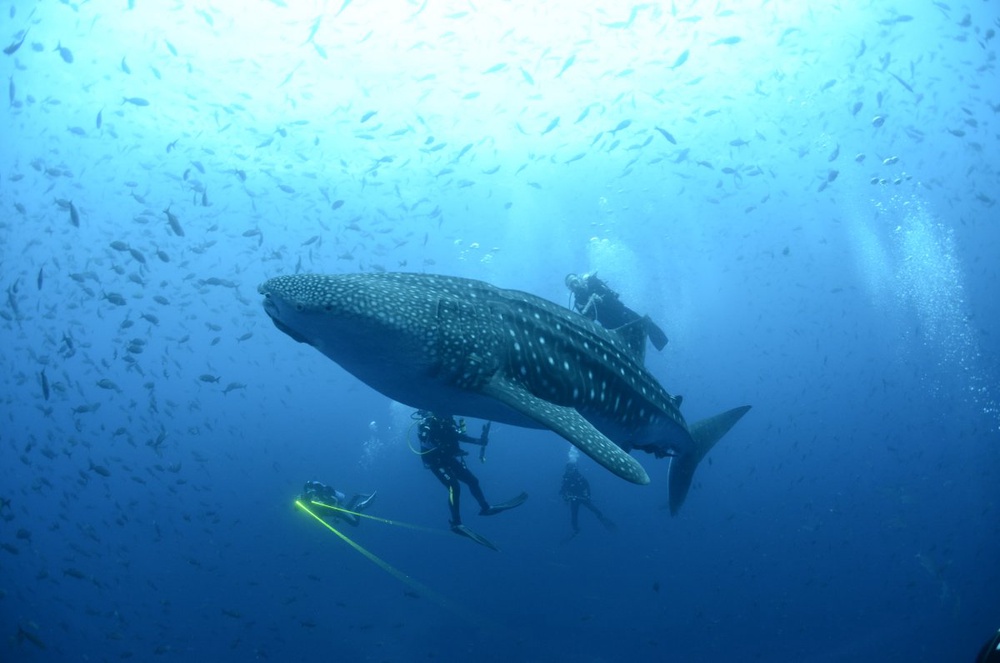
Australian Environment Minister Tony Burke Thursday hit out at Japan's "alleged" scientific whaling as researchers hailed the testing of new acoustic tracking technology for the endangered blue whale, AFP reports. Burke was given a demonstration of the science in the city of Hobart, where he applauded the innovation and dedication of those working to find out more about the threatened species -- the largest animal that has ever lived. "Blue whales are under threat of extinction and improved scientific knowledge will help in the conservation and recovery of the species," he said of a creature that can grow to 31 metres (102 feet). "This research reinforces Australia's commitment to non-lethal research of whales. This contrasts with Japan's so-called 'scientific whaling' where the alleged research begins with a harpoon. "This breakthrough project again shows you don't have to kill a whale to study it." Commercial whaling is banned under an international treaty but Japan has since 1987 used a loophole to carry out "lethal research" on the creatures in the name of science. Australian Antarctic scientists successfully tested the technology to track and locate scores of blue whales hundreds of kilometres away by eavesdropping on the elusive animals' resonating song. By using sound rather than sight to initially detect them, the scientists significantly improved the likelihood of finding and counting whales in the vast Southern Ocean. The research is part of an Australian-led international project to estimate the abundance, distribution and behaviour of the species that was decimated in the early 1900s when whaling killed approximately 250,000 animals. Around 10,000 are now believed to populate the world's oceans. To test the technology, a team of scientists deployed directional sonobuoys in the northern Bass Strait in January and March this year. Team leader Mike Double said that over 20 days there were 103 sightings. "While blue whales are the largest animals on earth, growing up to 31 metres long, they're still very difficult to find in a vast ocean and we know very little about them," Double said. "The real-time passive acoustic tracking system was highly effective at picking up their low frequency calls from hundreds of kilometres of away, thus maximising our chance of locating them." The sonobuoys allowed researchers to record more than 500 hours of audio including more than 20,000 blue whale vocalisations. Once the whales were located they were photographed and biopsied for further identification. The technology will now be used in the Antarctic Blue Whale Project, which will estimate their abundance and migration patterns in January next year.





Australian Environment Minister Tony Burke Thursday hit out at Japan's "alleged" scientific whaling as researchers hailed the testing of new acoustic tracking technology for the endangered blue whale, AFP reports.
Burke was given a demonstration of the science in the city of Hobart, where he applauded the innovation and dedication of those working to find out more about the threatened species -- the largest animal that has ever lived.
"Blue whales are under threat of extinction and improved scientific knowledge will help in the conservation and recovery of the species," he said of a creature that can grow to 31 metres (102 feet).
"This research reinforces Australia's commitment to non-lethal research of whales. This contrasts with Japan's so-called 'scientific whaling' where the alleged research begins with a harpoon.
"This breakthrough project again shows you don't have to kill a whale to study it."
Commercial whaling is banned under an international treaty but Japan has since 1987 used a loophole to carry out "lethal research" on the creatures in the name of science.
Australian Antarctic scientists successfully tested the technology to track and locate scores of blue whales hundreds of kilometres away by eavesdropping on the elusive animals' resonating song.
By using sound rather than sight to initially detect them, the scientists significantly improved the likelihood of finding and counting whales in the vast Southern Ocean.
The research is part of an Australian-led international project to estimate the abundance, distribution and behaviour of the species that was decimated in the early 1900s when whaling killed approximately 250,000 animals.
Around 10,000 are now believed to populate the world's oceans.
To test the technology, a team of scientists deployed directional sonobuoys in the northern Bass Strait in January and March this year.
Team leader Mike Double said that over 20 days there were 103 sightings.
"While blue whales are the largest animals on earth, growing up to 31 metres long, they're still very difficult to find in a vast ocean and we know very little about them," Double said.
"The real-time passive acoustic tracking system was highly effective at picking up their low frequency calls from hundreds of kilometres of away, thus maximising our chance of locating them."
The sonobuoys allowed researchers to record more than 500 hours of audio including more than 20,000 blue whale vocalisations.
Once the whales were located they were photographed and biopsied for further identification.
The technology will now be used in the Antarctic Blue Whale Project, which will estimate their abundance and migration patterns in January next year.

 +7 (777) 001 44 99
+7 (777) 001 44 99



 Қазақша
Қазақша Русский
Русский English
English














































